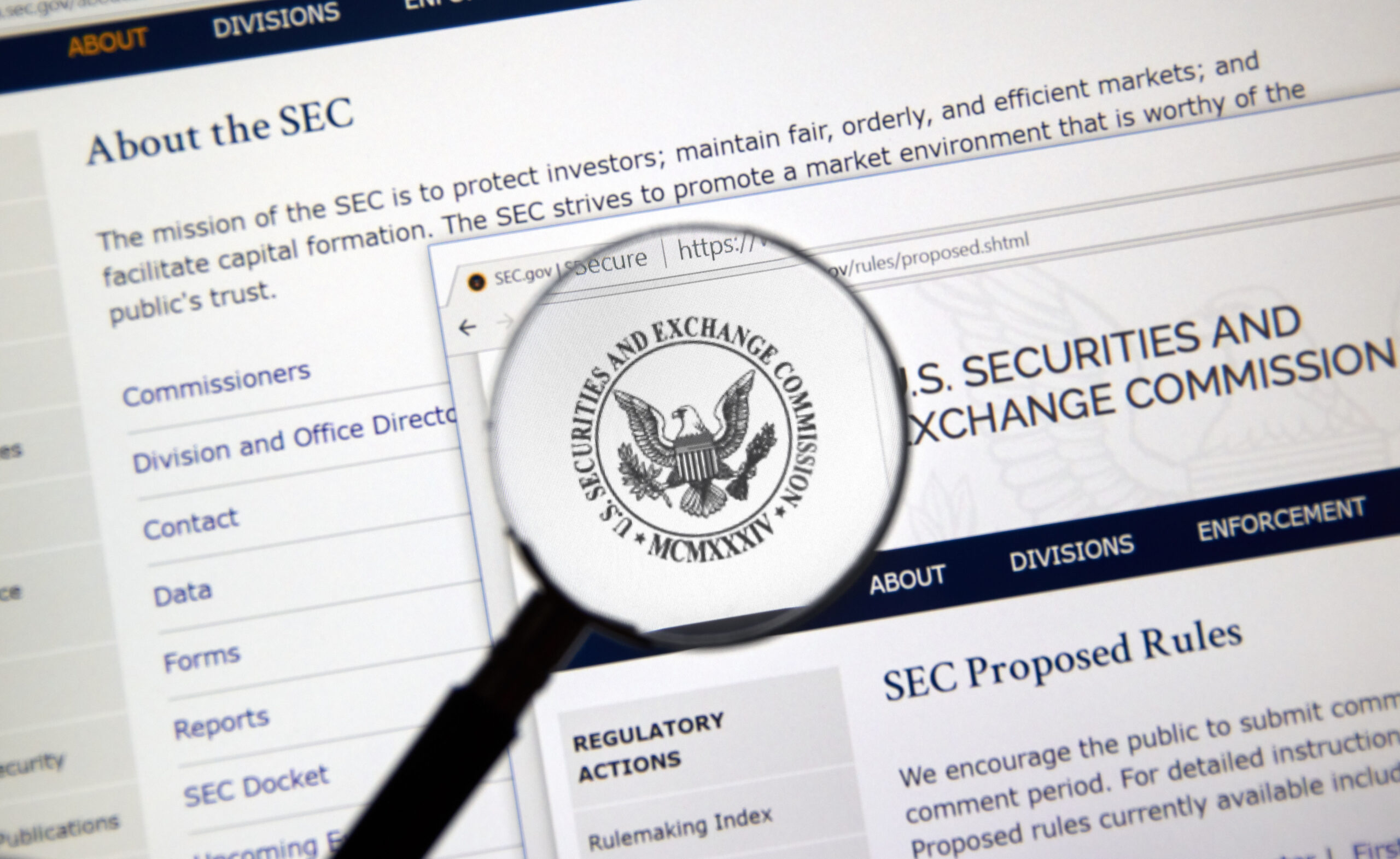In the ever-changing landscape of securities regulation, understanding the SEC Enforcement Manual is crucial for individuals and businesses alike. With the potential for severe consequences, navigating the complex world of securities law can be daunting. This blog post aims to demystify the process, providing insights into the key components of the manual, the role of the Division of Enforcement, and the intricate investigation process. By the end, you’ll be equipped with the knowledge to protect yourself and your firm from potential enforcement actions.
Key Takeaways
- The SEC Enforcement Manual provides insight into the enforcement process and outlines key components, such as investigative processes and remedies.
- Responding to an investigation requires legal counsel, timely compliance with subpoenas/requests for information, and a well-prepared Wells Submission.
- Protect yourself from potential enforcement actions by implementing robust compliance programs & regularly reviewing policies & procedures in line with industry standards.
Understanding the SEC Enforcement Manual

The SEC Enforcement Manual, commonly known as the “Red Book,” serves as a vital reference for both SEC staff and those subject to its enforcement actions, such as civil or administrative actions. The manual outlines the enforcement process, detailing the purpose, scope, and key components, such as examining brokerage records during investigations.
Grasping the manual helps in better navigating the complexities of SEC investigations and enforcement actions, thereby reducing the risk of securities law violations.
Purpose and Scope of the Manual
The manual is designed to provide SEC staff with a comprehensive guide on the procedures and policies for investigating and enforcing securities laws.
A critical aspect of these investigations is the statute of limitations, which was recently amended by the National Defense Authorization Act (NDAA) to extend the timeframe for disgorgement in intentional fraud cases to 10 years.
Comprehending the manual’s purpose and scope can help individuals and entities anticipate the SEC’s approach to potential violations of federal securities laws more effectively.
Key Components of the Manual
The manual covers a range of topics, including the role of the Division of Enforcement, the investigative process, and enforcement actions. The investigative process involves collecting evidence, interviewing witnesses, and examining documents to determine whether any breaches of the law have occurred.
Enforcement actions, on the other hand, may include civil injunctions, cease and desist orders, administrative proceedings, and civil litigation. Furthermore, the manual outlines available remedies and sanctions, such as monetary penalties and disgorgement of profits.
The Role of the Division of Enforcement

The Division of Enforcement, a key player in the securities industry, is responsible for investigating potential violations of securities laws and regulations and enacting enforcement actions against those who have broken these laws. This process involves collecting evidence, interviewing witnesses, and analyzing documents to determine whether any securities laws or regulations have been breached.
If a violation is found, the Division can issue cease-and-desist orders, impose civil penalties, and bring civil or criminal charges as appropriate. Protecting yourself and your firm from SEC enforcement actions necessitates the implementation of comprehensive compliance programs and consistent review and revision of policies and procedures.
Investigating Potential Violations
SEC investigations are initiated based on a multitude of sources, such as:
- Market surveillance activities
- Whistleblower tips
- Investor complaints
- News reports
When the SEC identifies potential criminal misconduct during an investigation, the matter is referred to the appropriate law enforcement agency for further action.
In order to investigate potential securities law violations, the Division utilizes various sources of evidence, including:
- Market surveillance activities
- Investor tips and complaints
- Other divisions and offices of the SEC
- Media reports
Taking Enforcement Actions
Upon completion of an investigation, the Enforcement Division assesses whether enforcement actions should be taken against any individuals or entities that have violated securities laws. Enforcement actions may include civil or administrative proceedings, settlements, or referrals to other agencies for criminal prosecution.
Understanding the enforcement action process allows individuals and entities to gain a clearer picture of the potential outcomes and ramifications of SEC investigations.
The SEC Investigation Process

The SEC investigation process begins with an informal inquiry, followed by an examination of brokerage records and reviewing trading data. Investigators then issue subpoenas for documents and testimony to gather evidence.
The outcome of the investigation may lead to the conclusion of the inquiry with no indication of misconduct, or it may result in the initiation of enforcement actions, such as filing a case in federal court or beginning an administrative action.
Formal Order of Investigation
A formal order of investigation is an official document issued by the SEC to initiate an investigation into potential violations of laws or regulations. The intent of a formal order of investigation is to outline the scope, purpose, and procedures of the investigation.
A formal order confers the necessary authority on the SEC staff to thoroughly investigate potential securities law violations by empowering them to issue subpoenas for documents and witnesses, once the SEC decides to proceed with the investigation.
Gathering Evidence
During an SEC investigation, evidence is collected through various methods, such as document requests, interviews, and other investigative techniques. This process aims to gather sufficient evidence to determine whether any securities laws have been violated and, if so, what enforcement actions should be taken.
Through the collection of evidence, the SEC can construct a robust case against law violators and hold them accountable for their misconduct.
Closing or Escalating the Investigation
The outcome of an SEC investigation may lead to the closure of the case if no violations are found, or it may escalate to enforcement actions if violations are discovered. The SEC staff submits their findings to the Commission for assessment, and the Commission may authorize the staff to file a case in federal court or initiate an administrative action.
In many cases, the Commission and the party charged decide to resolve the issue without a trial, ensuring a more efficient resolution of the matter.
Responding to an SEC Investigation

Responding to an SEC investigation requires retaining legal representation and complying with subpoenas and requests for information. Failing to comply with an SEC investigation may result in enforcement actions, such as lawsuits, court orders, and industry bans.
For an appropriate response to an SEC investigation, seeking advice from a seasoned securities attorney and adhering to all information requests is necessary.
Legal Representation
Hiring experienced securities counsel is crucial for navigating the investigation process and protecting your interests. Legal representation can provide strategic advice, negotiate settlements, and provide litigation support.
Legal counsel can assist in navigating the investigation and minimizing its impact on your reputation and business by formulating a customized defense plan, scrutinizing the evidence, and pinpointing potential weaknesses in the SEC’s case.
Complying with Subpoenas and Requests for Information
Complying with subpoenas and information requests is essential to avoid further enforcement actions or penalties. Respondents should produce documents in OCR text, provide indexed itemized lists, and assert privileges with specificity.
Adhering to the SEC’s information requests and collaborating with legal counsel to resolve any objections or disputes can help individuals and firms reduce the likelihood of unfavorable outcomes in the investigation process.
The Wells Notice and Submission Process
The Wells Notice and submission process allows individuals or firms under investigation to respond to potential enforcement actions. The Wells Notice, which offers the recipient a chance to present their defense and reasons against enforcement actions, is a vital tool for ensuring a balanced and fair investigation process.
Receiving a Wells Notice
The Enforcement Division of the SEC issues a Wells Notice when they have preliminary findings from an investigation. The notice provides the recipient with the opportunity to argue against any proposed charges before they are formally filed..
By allowing the individual or entity to present their case, the Wells Notice helps ensure that all relevant information is considered before enforcement actions are taken.
Preparing a Wells Submission
Preparing a Wells Submission involves the following steps:
- Reviewing the Wells Notice
- Collecting evidence
- Executing legal analysis
- Drafting the Wells Submission with accompanying documentation
Individuals and firms can potentially evade enforcement actions and their associated repercussions through the submission of a well-prepared Wells Submission.
Outcomes of SEC Enforcement Actions
Outcomes of SEC enforcement actions can vary, ranging from settlement negotiations, administrative proceedings, or civil litigation. Understanding these potential outcomes is essential for individuals and firms to anticipate the consequences of an investigation and prepare accordingly.
Awareness of what to expect can assist individuals and firms in more effectively navigating the enforcement process and reducing the risk of unfavorable outcomes.
Settlement Negotiations
Settlements may involve monetary penalties, disgorgement, or other remedies, and are often negotiated to avoid lengthy litigation. The process of settlement negotiations typically involves initial discussions, exchange of information, negotiation, mediation or arbitration, drafting the settlement agreement, and approval and implementation.
Individuals and firms often achieve more favorable resolutions through settlement negotiations than through litigation alone.
Administrative Proceedings and Civil Litigation
Administrative proceedings and civil litigation, which can be considered as civil or administrative action, may result in penalties, injunctions, or other sanctions against the individual or firm. The procedure for these proceedings involves multiple steps, such as:
- Filing a complaint
- Service of process
- Pleadings
- Discovery
- Pretrial motions
- Trial
- Verdict
- Appeals
Understanding the procedures and potential outcomes of administrative proceedings and civil litigation enables individuals and firms to better prepare for and respond to enforcement actions. In some cases, an administrative law judge may be involved in the decision-making process.
Protecting Yourself and Your Firm from SEC Enforcement Actions
Protecting yourself and your firm from SEC enforcement actions involves implementing robust compliance programs and regularly reviewing and updating policies and procedures, in line with the guidelines set by self regulatory organizations.
Taking these proactive steps can help individuals and firms reduce the risk of securities law violations and maintain compliance with evolving securities laws and regulations.
Implementing Robust Compliance Programs
A strong compliance program can help prevent securities law violations and mitigate the risk of enforcement actions. Organizations can cultivate a culture of integrity, transparency, and accountability by:
- Setting clear policies and procedures
- Offering employees training and education on compliance topics
- Putting into place effective monitoring and auditing mechanisms
Implementing robust compliance programs not only helps organizations adhere to laws and regulations but also provides a competitive advantage and financial stability.
Regularly Reviewing and Updating Policies and Procedures
Regularly reviewing and updating policies and procedures ensures that your firm stays compliant with evolving securities laws and regulations. Organizations can maintain a strong compliance program and reduce the risk of enforcement actions by:
- Spotting and rectifying any gaps or weaknesses in processes
- Adapting to new technologies, market conditions, and organizational structures
- Giving employees clear role guidelines and expectations
Summary
Understanding the SEC Enforcement Manual and its processes is crucial for individuals and firms operating in the securities industry. By gaining insights into the roles and responsibilities of the Division of Enforcement, the investigation process, and the potential outcomes of enforcement actions, individuals and firms can better protect themselves and minimize the risk of securities law violations. Implementing robust compliance programs and regularly reviewing and updating policies and procedures can provide a strong foundation for meeting the demands of the ever-evolving regulatory landscape.
Frequently Asked Questions
How serious is an SEC investigation?
SEC investigations are very serious and could result in civil or administrative action being taken against a firm, as well as potential federal or state legal action or criminal enforcement by the DOJ. These investigations can have serious consequences for the firm, including fines, penalties, and other sanctions. In some cases, the SEC may even seek to bar individuals from the securities industry or from serving as officers or directors of public companies. It is important for firms to take
How often does SEC settle cases?
Almost all SEC cases settle, with roughly 98% settling without litigation. This is a testament to the effectiveness of the SEC’s enforcement program. The SEC is able to bring cases to a resolution without the need for costly and time-
How long does an SEC settlement take?
On average, an SEC settlement typically takes two business days after the trade date (T+2). However, with the amendment of the rule adopted by the SEC on February 15, 2023, settlements are now commonly made within one business day after the trade date (T+1).
How does a SEC investigation start?
The SEC begins a formal investigation by issuing a Formal Order of Investigation, after the Commission reviews and votes on a memo drafted by the SEC staff. This process is designed to ensure that the Commission has sufficient information to make an informed decision about whether to open an investigation. The Commission may also issue subpoenas to obtain additional information.
What is an sec enforcement action?
An SEC enforcement action is an investigation pursued by the SEC’s Division of Enforcement to identify any violations of U.S. securities laws. The outcome of such an action can include a court order for ceasing and desisting from activities, restitution to investors, disgorgement of funds, and civil penalties.



